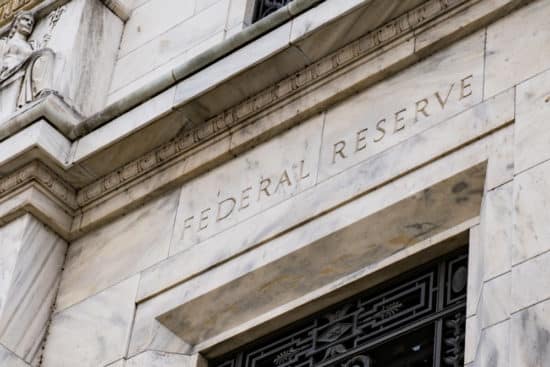
Wall Street Bullish on Gold, Main Street Skeptical
Amid cooling geopolitical tensions and a slow week for economic data releases, the gold market ultimately returned its focus to the Federal Reserve’s interest rate path.
Spot gold opened the week trading just above the $2,300 level, and spent most of the week trading in a $30 range. In the absence of other significant data, gold prices took their direction from Thursday morning’s weekly jobless claims, which surprised to the upside.
In light of Fed chair Jerome Powell’s comments that rate cuts remain on the table for 2024, gold traders decided that the high jobless claims print improved those odds, and gold broke definitively above $2,330 just after 10:30 am EDT, climbing steadily for the rest of Thursday and throughout the overnight trading session before attaining its weekly peak of $2,378.56 per ounce around 6:30 am Friday morning. It continued to hold most of those gains throughout the Friday session.

The latest Kitco News Weekly Gold Survey sees industry experts showing renewed optimism about the precious metal, while only half of retail traders believe gold prices can appreciate next week.
James Stanley, senior market strategist at Forex.com, sees a favorable near-term technical picture for gold.
“Bears have had ample opportunity to re-take control of the trend, but ever since the low printed on the NFP report, bulls have been making their way back,” Stanley said. “This week saw a break of the falling wedge, which takes on a similar appearance as a bull flag, and this keeps the door open for continued strength next week.”
Adrian Day, President of Adrian Day Asset Management, sees the situation as fairly balanced for the coming week.
“Gold’s resilience has been very strong,” Day said, “but I suspect we will see a pullback after another assault on $2,400, so for next week I’ll go with unchanged.”
Adam Button, head of currency strategy at Forexlive.com, is concerned about Asian demand, but believes the uptrend remains in place. “Your story about the slowdown in gold buying from China has me worried, but it’s tough to argue with the price action,” he said.
“We should consider that gold quotes have been periodically updating historical highs since February,” said Alex Kuptsikevich, senior market analyst at FxPro. “We can also consider the April retreat as a correction to the area of 76.4% of the growth impulse from the minimum close of the day in February to the maximum close in April. In this case, the growth target becomes the area of $2640 (161.8% of the initial rally).”
At the same time, a further rise in the price of gold with high bond yields in developed countries, huge budget deficits in many countries and the need to support the economy makes one think that the upside potential is limited,” Kuptsikevich warned. “Until gold and silver reach a new level, we doubt the success of a new attack on the highs and see the potential for a renewed decline.”
“I am bullish on gold for next week,” said Colin Cieszynski, Chief Market Strategist at SIA Wealth Management. “It’s an interesting setup: If US CPI comes in hot, gold is seen as an inflation hedge. If US CPI comes in cold, rate cut speculation may increase and tank the US Dollar, which also could be good for gold.”
Everett Millman, Chief Market Analyst at Gainesville Coins, said the gold market is actually looking past geopolitics and interest rates in an attempt to gauge systemic risks.
“Obviously, geopolitics has taken a backseat,” Millman said. “But really I think beyond the Fed, it comes back to this idea of what’s the level of risk or concern in the financial system generally. I think this big move we’ve seen by the Bank of Japan to intervene with the yen, that has a trickle-down effect where now perhaps the Fed or the Treasury gets involved. I think all of that is actually why gold has rebounded, because it’s back in the headlines again, these questions about the role of the dollar in international finance, and what are other fiat currencies doing?”
“I think that’s really the main concern, whether or not individual traders are trading off that, or are aware of that,” he added. “I think that the evidence points to the large institutions taking their cues from the broader financial markets that gold is there to be safe when other things look risky. I think that’s the main thing.”
Turning to the price action, Millman said he’s still having a hard time trusting gold at these elevated levels.
“I think it is interesting that the current floor seems to be around $2,300,” he said. “Based off my historical experience, it still just feels overbought, even if perhaps at this point, based on positioning, that’s technically not the case. It wouldn’t at all surprise me for gold to retest below $2,200 or $2,150 on the next event that prompts a selloff, or development that points to the Fed being higher for longer.”
“Powell’s been very clear that the next move is a cut,” he said. “I think that doesn’t have to be the case. Things could change. He could come out and say that we’re at equal risk of a cut or a hike, and I think that would very much change the calculus of what markets broadly are looking at right now, and the same would be true of gold. We could get a selloff back down to $2,100.”
“I don’t think it’s unreasonable to expect that the real floor for the gold price in the medium term is actually lower than what we’re seeing right now,” Millman said. “But I think the same is true of the ceiling. It’s exciting to see if gold gets back to, testing its record highs from the past couple of months, but I don’t think that’s hard resistance for gold right now.”
Millman believes that the floodgates are open for gold now. “The next time we see gold break out or rally, I don’t think it’ll have any problem pushing far above $2,400, $2,500, even $2,600,” he said. “These things are not out of the realm of possibility, just given the price action we’ve seen this year.”
This week, 17 Wall Street analysts participated in the Kitco News Gold Survey, and very few see gold declining in price. Ten experts, or 59%, expected to see gold prices climb higher next week, while only two analysts, representing 12%, predicted a price drop. Five experts, or 29% of the total, see gold trending sideways.
Meanwhile, 195 votes were cast in Kitco’s online poll, with Main Street investors significantly more pessimistic on balance. 97 retail traders, exactly 50%, looked for gold to rise next week. Another 42, or 21%, predicted it would be lower, while 56 respondents, representing 29%, expect the precious metal to trade sideways during the week ahead.

Inflation data returns to the fore next week, with the release of U.S. PPI for April on Tuesday and April CPI on Wednesday. Other significant data include Wednesday’s U.S. retail sales report and the New York Fed’s Empire State Survey, as well as Thursday’s weekly jobless claims, U.S. building permits and housing starts, and the Philadelphia Federal Reserve manufacturing survey.
Markets will also be eager to hear what Federal Reserve Chair Jerome Powell has to say when he speaks in Amsterdam on Tuesday.
Darin Newsom, Senior Market Analyst at Barchart.com, was looking at the various timeframes to determine which charts were likely to prove useful.
“This past week saw the June contract come up short of hitting its downside target at $2,268,” he said. “Early Friday has June extending its short-term rally, a move that could carry over into next week.”
“Here’s where things get fun: If we apply the Goldilocks Principle (Daily charts are too hot, monthly charts are too cold, but weekly charts are just right), June gold’s weekly chart still shows an intermediate-term downtrend in place with this rally looking to be Wave B (second wave) of the 3-wave pattern. Given this, I’m expecting June to start moving lower again in time.”
Kevin Grady, president of Phoenix Futures and Options, believes that all the significant recent moves, in equities, gold and other markets, are based on calculations of what the Fed is going to do with interest rates. “Every piece of data that comes out, whether it’s jobless claims or inflation numbers, they’re going to move that market,” he said.
Grady said that Powell’s statement that rate cuts are still on the table put all these indicators back in focus, after equities and gold had dumped following strong employment and inflation prints.
“I think that’s what the markets are moving on,” he said. “That’s what the algorithms are plugged in to, and they just read the data. And as those things are released, they’re reading it, and the markets are moving based on that. I think that it’s the algos and the retail traders that are trading the economic data numbers specifically.”
Meanwhile, Grady said that central banks and big institutions are the ones steadily raising the floor on gold prices. “I think what’s happening is that you’re seeing so much central bank buying, and that’s why the market rebounds so well after these selloffs,” he said. “There’s buyers under the market. I believe that central banks are the ones buying, and China, Russia, a lot of these countries are buying it. I think a lot of people want to start getting away from the U. S. dollars, after the sanctions happened with Russia, after they invaded Ukraine.”
“If you look percentage-wise where gold is, you’re not seeing the deep, hundred-dollar selloffs,” he added. “I think people realize that there are buyers there. They’re willing to buy dips and they’re willing to be patient, but they’re accumulating a lot.”
Still, despite these supportive dynamics, Grady thinks the market will ultimately be disappointed by the Fed.
“Personally, I don’t think they’re going to be able to cut rates this year,” Grady said. “The inflation is too sticky. I think that when you really look at it, it’s not coming off. We’re going into a season where people are spending money, and I think that inflation is going to stay.”
“Holding long precious metal positions,” said Mark Leibovit, publisher of the VR Metals/Resource Letter. “Gold target remains unchanged at $2,700, hopefully this year.”
“Up,” said Michael Moor, Founder of Moor Analytics, “unless we leave a maintained gap lower Monday.”
“We held exhaustion at 2,288.5 with a 2,285.2 low and rallied $100.1,” he said. “The break back above 2,302.0 (+1.6 per/hour) has brought in $83.3 of strength. The maintained gap higher today also left a moderate bullish reversal below that warns of decent strength, likely for days.”
And Kitco Senior Analyst Jim Wyckoff sees continued strength for gold prices next week. “Steady-higher as bulls gained more technical power this week,” he said.
Spot gold last traded at $2,363.51 per ounce at the time of writing, up 0.74% on the day and 2.68% on the week.

The financial market is crumbling and EVERYONE will be affected. Only those who know what's going on and PREPARE will survive... dare we say thrive. Our 7 Simple Action Items to Protect Your Bank Account will give you the tools you need to make informed decisions to protect yourself and the ones you love.











